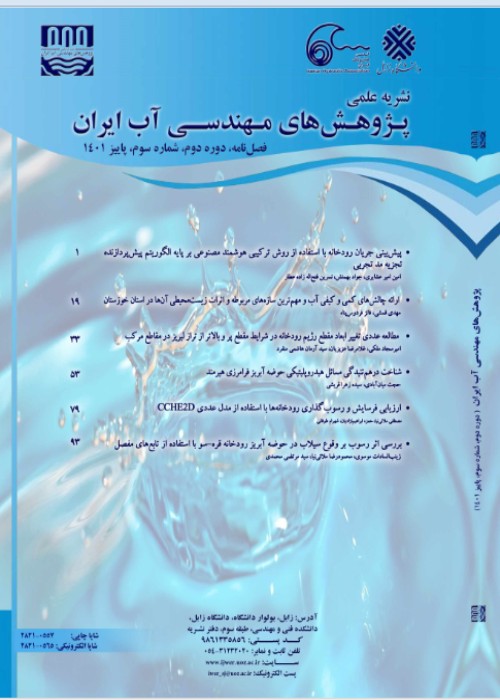Sensitivity Analysis of Muskingum flood routing respect to the DEM Using HEC-HMS (Case study: Dez dam catchment)
There have been too many natural disasters around the world that have caused natural disasters. In this natural phenomenon of floods, special importance is used, through which loading is one of the most important factors that is involved in the hydrological cycle independently. Since precipitation has played an important role in rainfall-runoff development, the accurate estimation will be used to accurately estimate flood hydrographs. In this study, to analyze the results of hydrological models using morphometric models in the upstream of Dez Dam catchment, a rainfall-runoff model has been developed through ArcHydro and HEC-GeoHMS extensions in GIS. The Karun and Dez are the biggest rivers in Iran. The catchment's area of the Dez is 23250 km 2 which is nearly 1 percent of the land area of Iran. ... Talezang hydrometric station is located on the Dez River (15 km upstream of Dez Reservoir) and its upstream catchment area is 16130 Km2. This modeling was consisted of three Digital Elevations Model (DEM) of about 12, 30 and 70 meters. All three models has been developed with the same initial conditions in HEC-HMS. The Muskingum Routing unit models the flow of water in natural and man-made open channels using the Muskingum method to route the flow. The Muskingum Routing calculates the discharge within a river or channel reach given the inflow hydrograph at the upstream end. The unit is based on the continuity equation and the Muskingum storage relationship . A minimum of two Muskingum Routing sections are required for each end of the river or channel reach. SMA soil moisture method was used for losses, Muskingum method was used for river routing and return method was used for the basal flow. The occurrence of multiple floods in the catchment area of Karun River and the lack of hourly data justify the need for this research is a time-consuming step of daily use. Algorithm D8 in environmental modeling, as a well-known routing method, will find the flow to the output point based on cell density. This method uses the extracted waterways as a criterion for the demarcation of catchments. The basis for comparison of the results with different boundaries was the least error in the initial step. The results show that the 30-meter DEM is superior to the 70-meter model in terms of the higher accuracy in the model coefficients. Specifically, the 12 meters and 70 meters DEMs with the error of -3.66 and -3.79 is much higher than 30 meters DEM error of -0.079 in the initial output. Using 12-meters DEM, due to the large area and the increase in the computational costs, the amount of demarcation done to extract the sub-basins has been done with a statistical deviation. As a result, the 30-meter DEM was implemented to perform the calibration and the validation in a continuous period of hydrometric statistics. Finally, the developed model has been used to determine the limitations of events in the range of Dez dam. This results show that the Nash error in the first stage of the model implementation was -0.079 and after the implementation of the calibration stage in the long period has decreased to 0.5
-
Efficacy of Advanced Seepage Mitigation Techniques in Earth Dams: A Case Study of Shahid Yaghoubi and Maloo Dams
Seyed Hossein Mohajeri *, Hossein Afsharimoghadam, , Mohammadjavad Mashinchian
Journal of Hydraulics, Winter 2025 -
Investigating the subsidence phenomenon of the Karat Plain using the MODFLOW mathematical model and based on the development of GMS numerical package
Samira Bakhtiari, Houshang Khairy*, Mahin Eatemadifar, Hojat Mirani Moghadam,
Journal of Earth Sciences,



